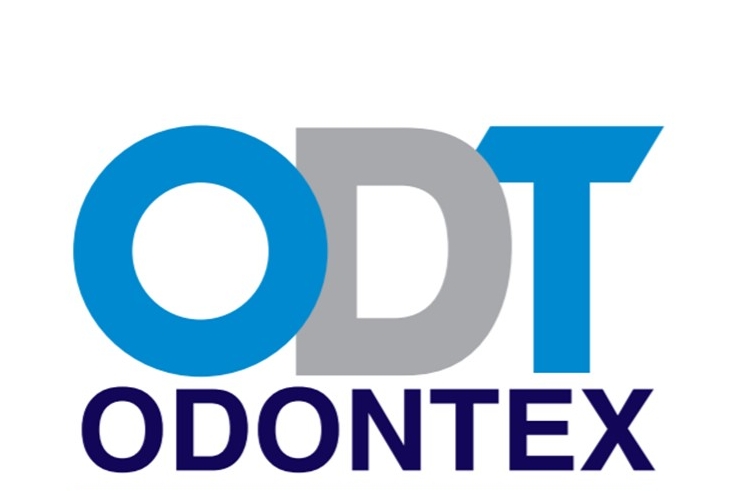Non-surgical endodontic treatment of mandibular left second premolar with gemination: a case report
Keywords:
double tooth, gemination, geminated tooth, non-surgical root canal treatment, root canal anatomyAbstract
Objective: This case report describes a non-surgical endodontic treatment of mandibular left second premolar with gemination that had carious exposed pulp.
Case report: In Thai male patient aged 35 years old, clinical examination, periapical radiographs at different horizontal angles and cone-beam computed tomography (CBCT) were performed to investigate unusual anatomy of coronal structure and root canal system in mandibular left second premolar with gemination. The gemination tooth had one large pulp chamber and two separated root canals, which were then joined at the apical third of root, with a presence of incomplete isthmus. After caries removal, non-surgical endodontic treatment was performed under a consideration of unusual root canal system. Coronal access was modified following the anatomy of large pulp chamber. Mesial and distal root canals were located and instrumented with rotary Ni-Ti files (Twisted Files, Sybron Endo, Orange, CA, USA) with copious amount of irrigants and passive ultrasonic irrigation technique. Combination of lateral and warm vertical compaction, as a hybrid technique, was used to obtain three-dimensional obturation in the unusual root canal system. A prefabricated fiber post and resin composite core build-up restoration was placed as an intermediate restoration. The patient was recalled to evaluate the successful outcome of treatment.
Conclusion: With a specific consideration of unusual root canal anatomy, geminated mandibular second premolar with pulpal and periapical pathosis can be successfully treated by non-surgical endodontic treatment.
References
Schuurs AH, van Loveren C. Double teeth: review of the literature. ASDC J Dent Child. 2000; 67: 313-25.
Shah P, Chander JM, Noar J, Ashley PF. Management of 'double teeth' in children and adolescents. Int J Paediatr Dent. 2012; 22: 419-26.
Sharma D, Bansel H, Snadhu SV, Bhullar RK, Bhandari R, Kakkar T. Fusion: A case report and review of literature. J Craniomaxillofac Surg. 2012; 1: 114-8.
Kremeier K, Hulsmann M. Fusion and gemination of teeth: review of the literature, treatment consideration, and report of cases. Endo Practice Today. 2007; 1: 111-23.
Kulkarni S, Meghana SM, Yadav M. Bilateral double teeth- A case report. Open J Stomatol. 2012; 2: 366-8.
Nahmias Y, Rampado ME. Root-canal treatment of a trifid crown premolar. Int Endod J. 2002; 35: 390-4.
Kremeier K, Pontius O, Klaiber B, Hulsmann M. Nonsurgical endodontic management of a double tooth: a case report. Int Endod J. 2007; 40: 908-15.
Aryanpour S, Bercy P, Van Nieuwenhuysen JP. Endodontic and periodontal treatments of a geminated mandibular first premolar. Int Endod J. 2002; 35: 209-14.
Rodig T, Hulsmann M. Diagnosis and root canal treatment of a mandibular second premolar with three root canals. Int Endod J. 2003; 36: 912-9.
Keys WF, Keightley AJ, Welbury RR. Sectioning of a double tooth aided by cone-beam computed tomography. Eur Arch Paediatr Dent. 2013; 14: 167-71.
Aguiar CM. Endodontic treatment of a geminated maxillary left first premolar: a case report. Acta Stomatol Croatia. 2011; 45: 215-9.
Tsesis I, Steinbock N, Rosenberg E, Kaufman AY. Endodontic treatment of developmental anomalies in posterior teeth: treatment of geminated/fused teeth--report of two cases. Int Endod J. 2003; 36: 372-9.
Fan B, Pan Y, Gao Y, Fang F, Wu Q, Gutmann JL. Three-dimensional morphologic analysis of isthmuses in the mesial roots of mandibular molars. J Endod. 2010; 36: 1866-9.
Alves Vde O, Bueno CE, Cunha RS, Pinheiro SL, Fontana CE, de Martin AS. Comparison among manual instruments and PathFile and Mtwo rotary instruments to create a glide path in the root canal preparation of curved canals. J Endod. 2012; 38: 117-20.
Siqueira JF, Jr., Rocas IN, Favieri A, Lima KC. Chemomechanical reduction of the bacterial population in the root canal after instrumentation and irrigation with 1%, 2.5%, and 5.25% sodium hypochlorite. J Endod. 2000; 26: 331-4.
van der Sluis LW, Versluis M, Wu MK, Wesselink PR. Passive ultrasonic irrigation of the root canal: a review of the literature. Int Endod J. 2007; 40: 415-26.
Endal U, Shen Y, Knut A, Gao Y, Haapasalo M. A high-resolution computed tomographic study of changes in root canal isthmus area by instrumentation and root filling. J Endod. 2011; 37: 223-7.
Sari S, Duruturk L. Radiographic evaluation of periapical healing of permanent teeth with periapical lesions after extrusion of AH Plus sealer. Oral Surg Oral Med Oral Pathol Oral Radiol Endod. 2007; 104: e54-9.
Downloads
Published
How to Cite
Issue
Section
License
Copyright (c) 2022 Thai Endodontic Journal

This work is licensed under a Creative Commons Attribution-NonCommercial-NoDerivatives 4.0 International License.
Thai Endod Journal is licensed under a Creative Commons Attribution-NonCommercial-NoDerivatives 4.0 International (CC BY-NC-ND 4.0) license, unless otherwise stated. Please read our Policies in Copyright for more information.






